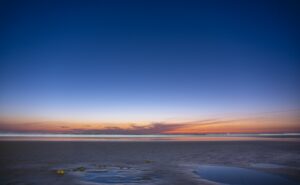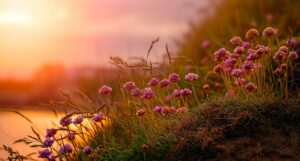
If you’re new to photography, you may have heard about the “rule of thirds.” The rule of thirds is a compositional guideline that can help you create more visually appealing photos. In this blog post, we’ll explain what the rule of thirds is and how you can use it to take better photos.
What is the Rule of Thirds?
The rule of thirds is a compositional guideline that divides your photo into thirds both horizontally and vertically, creating a grid of nine equal parts. The rule suggests that you should position the most important elements of your photo along the gridlines or at the intersections of the lines.
By doing so, you create a more balanced and visually appealing photo. The rule of thirds can be applied to all types of photography, from landscapes and portraits to still life and street photography.
How to Use the Rule of Thirds
To use the rule of thirds, imagine that your camera’s viewfinder or LCD screen has a grid of nine equal parts. Position the most important elements of your photo along the gridlines or at the intersections of the lines.
For example, if you’re taking a portrait, you might position the person’s eyes at one of the intersections of the gridlines, rather than in the center of the frame. If you’re taking a landscape photo, you might position the horizon on one of the horizontal gridlines, rather than in the center of the frame.
Using the rule of thirds can help create a more balanced and visually appealing photo, as it creates a sense of tension and balance between the elements of the photo. It also allows you to use negative space in a more effective way, as you can position the subject off-center and use the negative space to draw the viewer’s eye to the subject.
When to Break the Rule of Thirds
While the rule of thirds is a useful compositional guideline, it’s important to remember that rules are meant to be broken. Sometimes, placing the subject in the center of the frame can create a more powerful and impactful photo. Other times, breaking the rule can create a sense of imbalance or tension that enhances the photo’s mood or story.
Ultimately, the rule of thirds is a guideline that can help you create more visually appealing photos, but it’s not a hard and fast rule. Experiment with different compositions and use the rule of thirds as a starting point to find what works best for your style and vision.
In conclusion, the rule of thirds is a compositional guideline that can help you create more visually appealing photos by positioning the most important elements of your photo along the gridlines or at the intersections of the lines. While it’s not a hard and fast rule, using the rule of thirds as a starting point can help you create more balanced and effective compositions. So next time you’re out with your camera, give the rule of thirds a try and see how it can enhance your photos!
 If you’re a photographer, you may have also heard of the “blue hour,” a period of time just before sunrise or after sunset when the sky takes on a blue hue. This time is magical for photographers as it provides a unique opportunity to capture stunning photos. In this blog post, we’ll explore why the blue hour is so special and how you can take advantage of this time to create beautiful images.
If you’re a photographer, you may have also heard of the “blue hour,” a period of time just before sunrise or after sunset when the sky takes on a blue hue. This time is magical for photographers as it provides a unique opportunity to capture stunning photos. In this blog post, we’ll explore why the blue hour is so special and how you can take advantage of this time to create beautiful images. As a photographer, you may have heard of the term “golden hour” quite often. The golden hour is the time of day shortly after sunrise or before sunset when the light is soft, warm, and glowing, making it ideal for capturing stunning photos. In this blog post, we’ll explore why the golden hour is so magical and how you can take advantage of this time to create beautiful photos.
As a photographer, you may have heard of the term “golden hour” quite often. The golden hour is the time of day shortly after sunrise or before sunset when the light is soft, warm, and glowing, making it ideal for capturing stunning photos. In this blog post, we’ll explore why the golden hour is so magical and how you can take advantage of this time to create beautiful photos.

